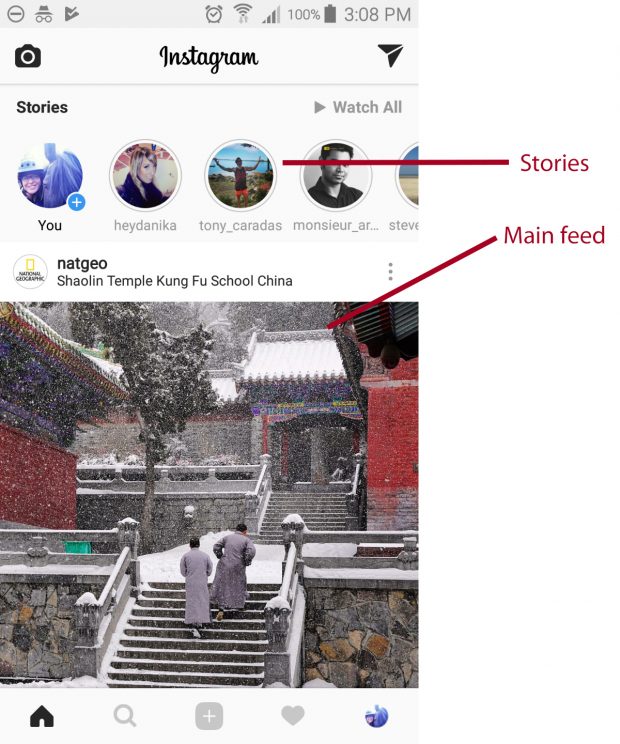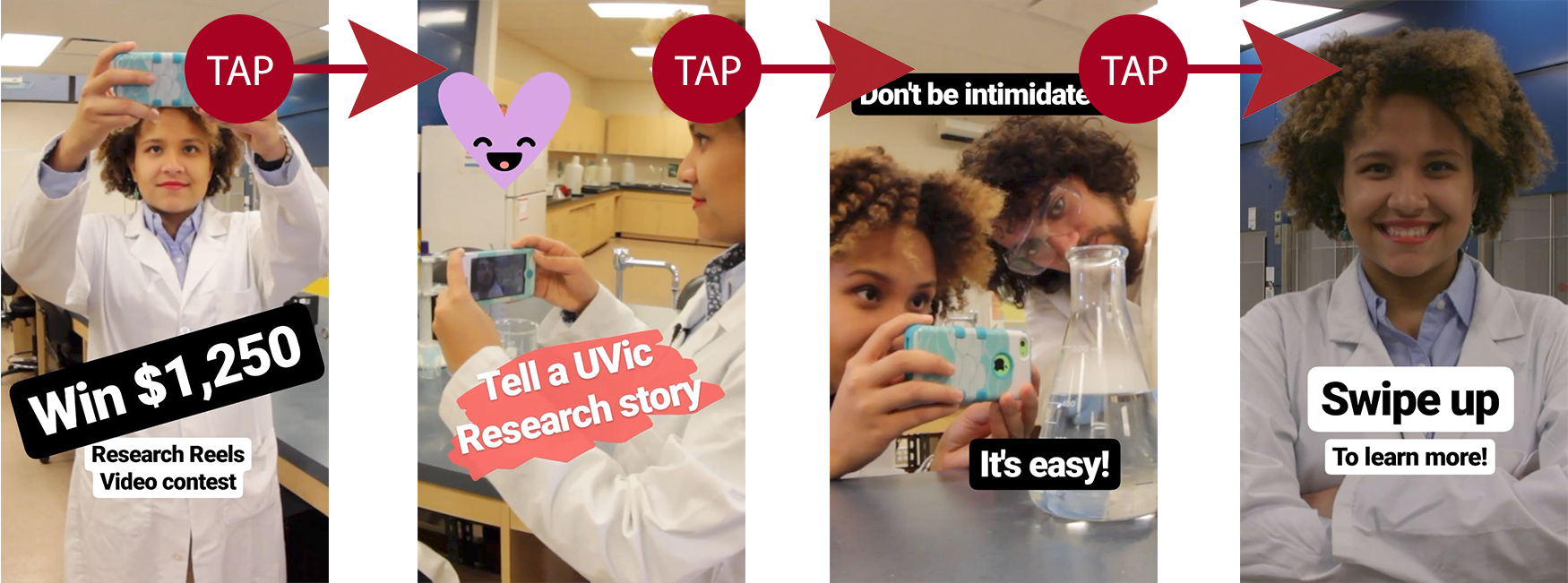As part of a social media campaign to encourage entries for my video contest (Research Reels), I created an Instagram Story. As this is new territory for me, I consulted with UVic’s social media wiz, Jes Scott, who gave me a tonne of advice on how students use Instagram and what their expectations are for Stories. Many things ran contrary to what I thought would work. As with many things on social media, this is an experiment. Tastes and expectations change rapidly. Only time will tell to see if this experiment worked.
First question: What is an Instagram story?
Simply put, Stories are Instagram’s version of Snapchat, which is a fun app that allows users to share photos and videos privately with their friends. You can put stickers and text over top of your Instagram Story photos/videos. Stories live for 24 hours and then disappear. They are meant to share a fun fleeting moment of someone’s life, in contrast to the beautifully crafted photos which appear in the main Instagram feed.
How are Stories consumed?
Stories appear horizontally along the top of the Instagram home screen, indicated with a circle with the creator’s username. When a user clicks on the circle icon, a full frame vertical story appears. It can contain one or more photos & videos, which a user can scroll through by tapping on the screen. If the user does not tap, the next photo will appear after 6 seconds or if it’s a video, up to 15 seconds. If users want to skip the entire story, they swipe left.
What resonates with young audiences?
- Users have a very short attention span and get “click-happy” with stories so don’t expect full engagement.
- Stories should be immediate and timely. For example, could you feature a fun event happening on campus?
- Be mindful that this story will only last 24 hours.
What makes users “swipe left” quickly?
- Users might skip the Story if the content is jarring and mismatches the tone of their feed.
- If there is jarring audio. Unlike Facebook, the audio is not automatically muted, so users in public spaces could be embarrassed if audio suddenly comes on.
- If it looks too commercial and not part of Instagram stories. Graphics, text and stickers should be primarily made within the app.
Things to keep in mind when making a story:
- Try to keep the number of slides under five
- Shoot photos & videos vertically (9:16 ratio)
- You can use a DSLR; but remember to hold the camera vertically
- Experiment! See what works
- Ask students to review your content before going live to see if it resonates
- You can import images & video from other sources (DSLRs for example) to make stickers & text overlays within the app
- Calls to action are a new feature. “Swipe up” on the last slide allows you to include a URL. You can include the instructions “swipe up for more” as text or a sticker.
What I did:
- First thing I did was to draft an outline (on paper!) with simple messages that would encourage entries. I wrote some short simple blurbs that I would overlay in the app.
- I then imported the footage into Final Cut Pro X to crop it to 1080 x 1920. (I had existing footage of a student in a lab coat for a promotional video I had shot on my Canon C100 cinema camera.)
- Then I exported the cropped footage as an MP4 file then imported it to my Android device for further editing.
- I then added text (from my outline) and a few stickers to four videos from within the Instagram app.
- I saved them out again as MP4 files.
- Our social media coordinator will assemble the four videos into a story on our university Instagram account. You could skip this step if you are using your school’s Instagram account to make the overlaid text and stickers. I would recommend this step, as you won’t lose as much quality doing that.
How we’re using it
Our social media coordinator ran the story last week and it was up for 24 hours. She may run it again.
How we will measure success?
- Impressions (views) averaged 3,056 over the four slides, representing around a fifth of our followers. I was happy to see most viewers didn’t skip the story.
- We could have tracked engagement (“swipes up”) if we’d used a bit.ly link (oops).
- We will know after the contest is over how entrants heard about it, via a survey.
What I learned:
- All the exporting, importing and cropping really did a number on the quality of my video files. Next time, I’ll plan ahead and shoot vertically to keep the resolution of my videos high. Shooting in 4k would have also helped but we do not have the equipment currently to accomplish this. Add the text and stickers from your school’s Instagram account to avoid repeatedly exporting files, which reduces the quality.
- I should have made a bit.ly link to track engagement. Instagram doesn’t track clicks (swipe-up actions).

